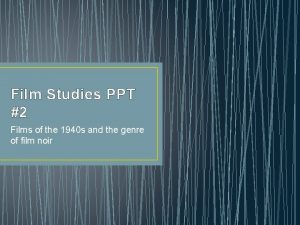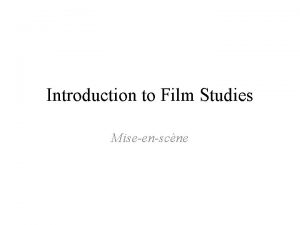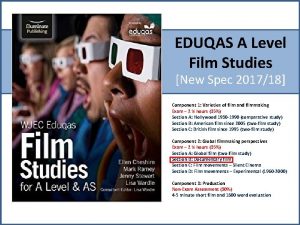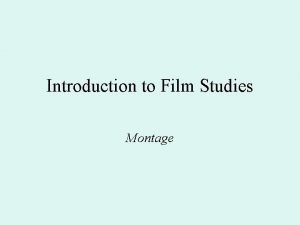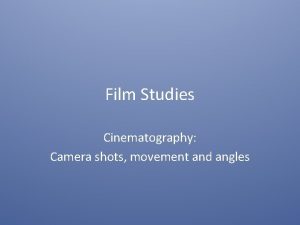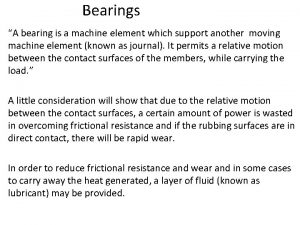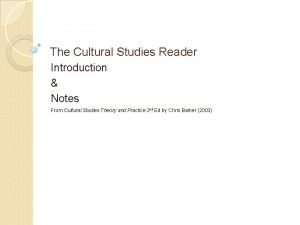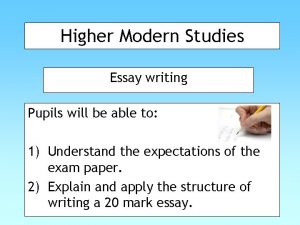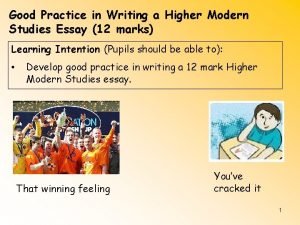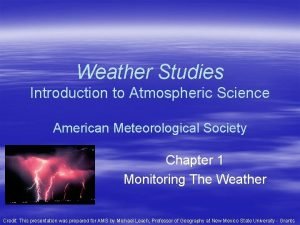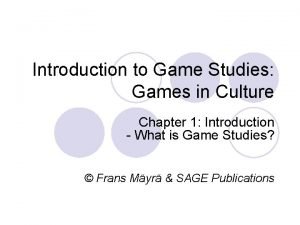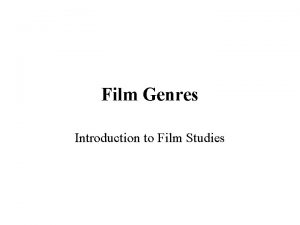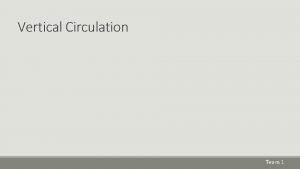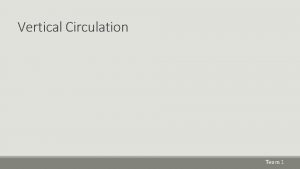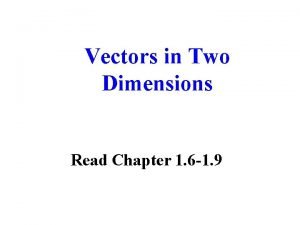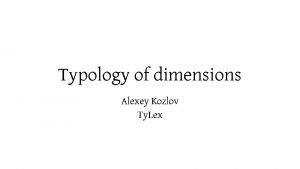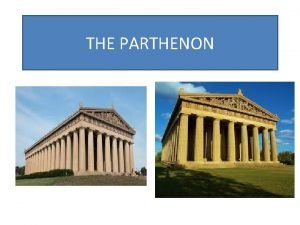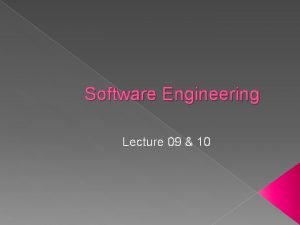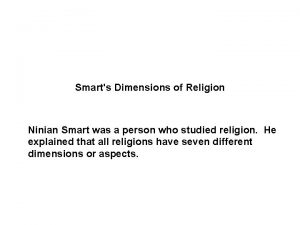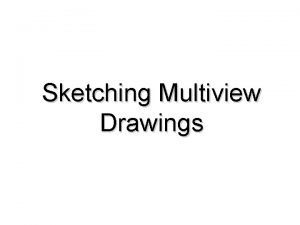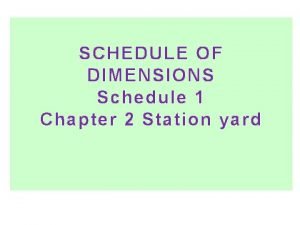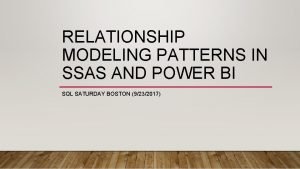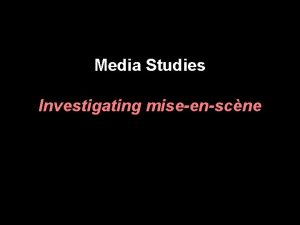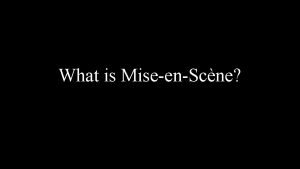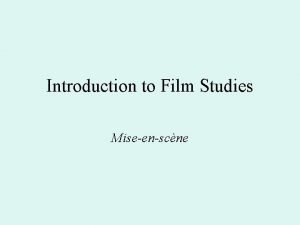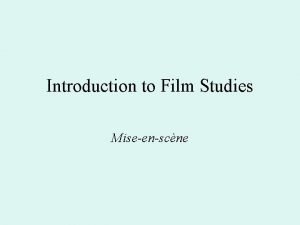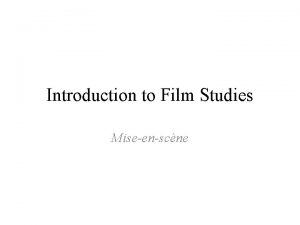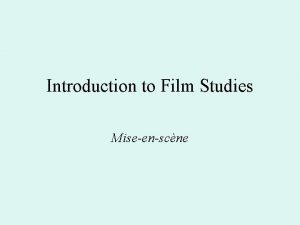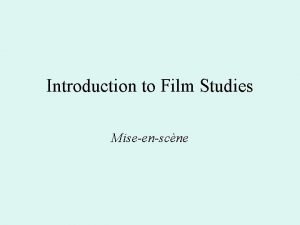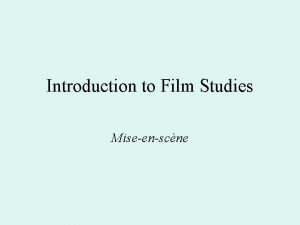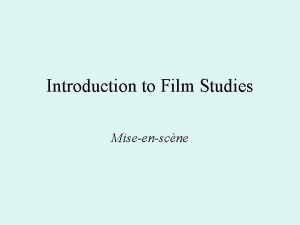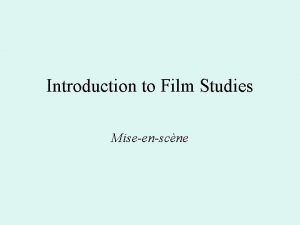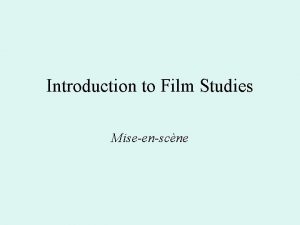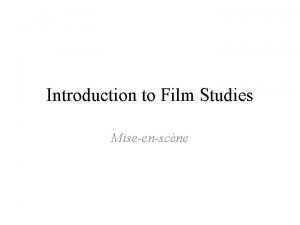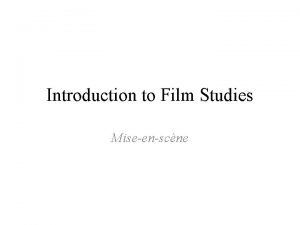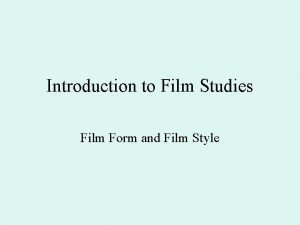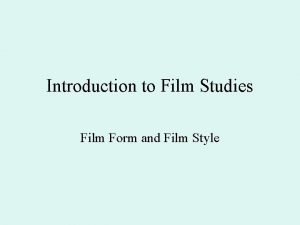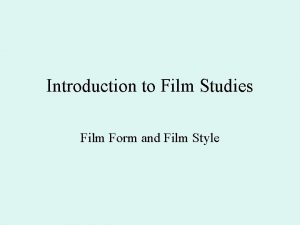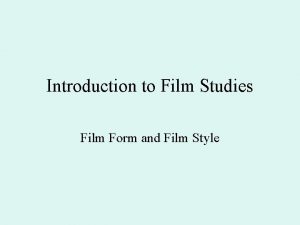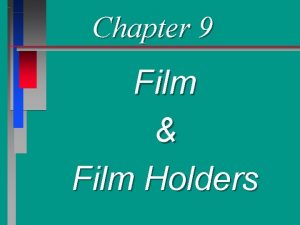Introduction to Film Studies Miseenscne Dimensions of Film







































- Slides: 39

Introduction to Film Studies Mise-en-scène

Dimensions of Film Editing The film editor consider four aspects of editing 1. Graphic relations between shots 2. Rhythmical relations between shots 3. Spatial relations between shots 4. Temporal relations between shots Graphic Relations Editing permits the interaction, through similarity and difference, of the pictorial qualities of shots (lighting, setting, costume, behaviour, framing, photography, and camera movement)

Rhythmic Relations in Editing • Rhythmic factors include beat, accent and tempo and are supported by mise-en-scène and sound. • The tempo of cutting is getting quicker and quicker as the day is getting more hectic in the helicopter sequence of Goodfellas. • Jump cuts, rock music with strong beats, clock • Goodfellas

• Scorsese experimented fast-paced editing in his TV commercial of Armani flagrance. Armani

• Tempo of cutting is slow matching the lugubrious and lethargic mood of the scene, the slow motion movements, and monotonous waltz music in Wong Kar Wai’s In the Mood for Love. • Each shot is long lasting over 10 seconds – long take first encounter

Dynamic Editing • Little graphic match – the camera angle and position constantly changes so that in each cut a character and the setting are shown from a different angle and different shot size. Angkor

Rhythmic Relations in Editing • Calm, quiet scene in slow editing and action scene in fast editing. From calmness and slowness to actions and fastness. Kurosawa Akira, Seven Samurai 1. 02

Continuity Editing • Graphic qualities must be kept continuous from shot to shot – once composition is fixed, it must be maintained; the overall lighting tonality must remain constant • The rhythm of editing has its own rules: long shots are left on the screen longer than medium shots, and medium shots are left on longer than close-ups • The aim of continuity editing is to create a smooth flow from shot to shot

The 180° system or rule • ‘Axis of action’, the ‘centre line’ or the 180° line • Only the shots taken from the camera placed in the 180° area on either side of the axis of action (the white area) must be edited together.

Establishing shot Falcon John Huston, The Maltese Falcon

Once the axis of action is established, the camera stays on the same side.



• Breaking the rule Tokyo Story Life disappointing

• This ensures some common space from shot to shot. • The 180° system ensures constant screen direction. • Once upon a Time in the West

• Sergio Leone, Once Upon a Time in the West • Once the positions of the black gunman on the right and the white on the left is established, the camera stays in the 180° area maintaining the spatial relationship.

Kobayashi Masaki, Harakiri Establishing shot



The first hit of the swords

The 180° line is maintained

Re-establishing shot – the position is changed within a single shot.

Re-re-establishing shot – the positions changed again within one single continuous shot Duel

Total contravention to the 180° rule in Jean Luc Godard’s Breathless


His car now moving from right to left






Car Theft

• Eye-line Match - in one shot a person is shown seeing off screen in one direction and in the next what he/she is seeing is shown




Continuity Editing • The 180° rule and the eye-line match are carefully observed and give the viewer consistent sense of direction in Alfred Hitchcock’s Rear Window. Jeffrey is a photographer on wheelchair and kills his time by looking into the apartments across from his. Eyeline match

Editing Devices • Cheat Cut - in the continuity editing system, a cut which presents continuous time from shot to shot but which mismatches the position of figures or objects • The lady on the phone, the wall and the people at dinner table, Meet me in St. Louis

Editing Devices • Establishing shots are for identifying the context for a scene by showing the relationship between important figures and their surrounding. Generally they are filmed in long or extreme-long shot at the beginning of a scene. Vertigo
 Film genres ppt
Film genres ppt Paradigm shift from women studies to gender studies
Paradigm shift from women studies to gender studies Dimensions of film editing
Dimensions of film editing Eduqas a level film studies
Eduqas a level film studies Montage in film studies
Montage in film studies Film studies terminology
Film studies terminology Master wide shot
Master wide shot A level film studies past papers
A level film studies past papers Slipper or guide bearing
Slipper or guide bearing What is cultural studies? a reader
What is cultural studies? a reader For and against essay structure
For and against essay structure Advanced higher modern studies essay examples
Advanced higher modern studies essay examples Weather studies introduction to atmospheric science
Weather studies introduction to atmospheric science American meteorological society
American meteorological society An introduction to game studies
An introduction to game studies Film genres and subgenres
Film genres and subgenres Introduction paragraph format
Introduction paragraph format Solomon's temple and the human body
Solomon's temple and the human body Elevator dimensions
Elevator dimensions Gearless vs geared elevator
Gearless vs geared elevator Vectors in 2 dimensions
Vectors in 2 dimensions Docmail access dimensions integration
Docmail access dimensions integration Class instructional support domain
Class instructional support domain Dimensions of universal health coverage
Dimensions of universal health coverage Asam six dimensions
Asam six dimensions Mr asam sitrat
Mr asam sitrat Lateral dimensions of class d airspace
Lateral dimensions of class d airspace Arma 3 whiteboard dimensions
Arma 3 whiteboard dimensions Trompenaars and hampden-turner cultural dimensions
Trompenaars and hampden-turner cultural dimensions Type approach
Type approach The parthenon dimensions
The parthenon dimensions Drivers of market globalization
Drivers of market globalization Fountain model in software engineering
Fountain model in software engineering Ninian smarts 7 dimensions
Ninian smarts 7 dimensions How to draw multiview drawings
How to draw multiview drawings 4 dimensions of service management
4 dimensions of service management Schedule of dimensions
Schedule of dimensions T-tess domains summary
T-tess domains summary Time dimension of the study
Time dimension of the study Role-playing dimensions power bi
Role-playing dimensions power bi
